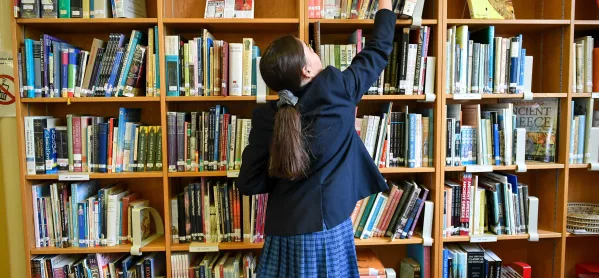The ŌĆ£bleeding downŌĆØ ╠²of GCSE╠²English teaching╠²into lower year groups is deterring students╠²from reading for pleasure, according to a subject expert.
The warning comes after a little-reported finding in last weekŌĆÖs Programme for International Student Assessment (Pisa) results╠²revealed a steep fall in the proportion of ╠²English teenagers who read for pleasure.
In the Pisa research,╠²nearly half - 48 per cent - of English 15-year-olds reported they did not read for enjoyment, compared with an average of 42 per cent of pupils across the Organisation for Economic Cooperation and Development.
Ėķ▒▒¶▓╣│┘▒╗Õ:╠²
░┐▒ĶŠ▒▓įŠ▒┤Ū▓į:╠²ŌĆśItŌĆÖs everyoneŌĆÖs job to encourage reading for pleasureŌĆÖ
Exclusive: Only a quarter of pupils get recommended reading for pleasure time
Just 26 per cent of English students reported reading for more than half an hour per day for pleasure, compared with 34 per cent across the OECD (see graph, below).
And the proportion of students╠²who said they read for pleasure in England had declined more rapidly than the OECD average since 2009, by nine percentage points compared with five╠²percentage points on average across the OECD.
ĘĪ▓į▓Ą▒¶▓╣▓į╗ÕŌĆÖs╠²overall reading scores╠²in Pisa╠²improved slightly, with the country placed 13th in the 2018 results -╠²up from 17th in 2015.
ŌĆśThe impact of GCSE reformsŌĆÖ
Rachel Roberts, from the National Association for the Teaching of English,╠²told teachers╠²at a recent╠²event in London╠²that the ŌĆ£bleeding downŌĆØ of GCSE English into the earlier years of secondary schooling was responsible for a decline in pupils reading for pleasure.
Ms Roberts, a PGCE secondary English tutor at the University of Reading,╠²said: ŌĆ£At key stage 3, thereŌĆÖs considerable evidence of the bleeding down of GCSE into earlier years, where GCSE texts are taught lower down the school as a way of getting through content, as well as including GCSE-style questions for Year 7.ŌĆØ
A new, ŌĆ£more rigorousŌĆØ╠²GCSE English syllabus was introduced in 2015 as part of reforms brought in by former education secretary Michael Gove.
The revised English literature GCSE is based entirely on a linear, end-of-course closed-book exam. Students╠²need to write critically about a Shakespeare text, a 19th-century novel and poetry from memory, while the reformed English language GCSE requires students╠²to analyse unseen passages from the 19th century.
The Department for EducationŌĆÖs position is that the revised GCSEs╠²prepare╠²students for the world of work and were implemented after a long and careful process of reform.╠²
But Ms Roberts said the╠²changes had restricted the type of╠²texts being taught to younger students, putting╠²them off reading -╠²a change that she felt had fed into the Pisa results.
She said:╠²ŌĆ£Because of the nature of the current GCSE syllabus, which heavily emphasises classics and linear exams, that has had an impact on how pupils view reading, as well as how English is taught lower down in the school.
ŌĆ£ItŌĆÖs also had an impact at key stage 3, affecting the choice of texts taught lower down the school, that are quite Victorian, squeezing out more diverse or young-adult fiction.ŌĆØ
And she said the Pisa findings that English students╠²found it hard to╠²distinguish between fact and fiction could partly be attributed to a╠²lack of contemporary╠²media texts being taught in the revised English language╠²GCSE.
Fewer students ŌĆśreading for pleasureŌĆÖ
ŌĆ£That element of teaching about media texts does not feature at all in the GCSE -╠²there might be a probable link with pupilsŌĆÖ inability to tell the difference between fact and fiction,ŌĆØ she said.
ŌĆ£When they are taught non-fiction, it is from the 19th century, which has no connection with the kind of texts pupils read online.ŌĆØ
Percentage of pupils who say╠²they read for enjoyment
Source: Pisa 2018
But there was a significant reduction in English pupils reading newspapers and magazines.
Just 18 per cent of English pupils reported reading newspapers several times a month voluntarily, compared with 60 per cent in 2009, while 10 per cent reported reading magazines in 2018 compared with 60 per cent in 2009.
This echoed patterns across the OECD, but the decline was more pronounced for England.
╠²
Source: Pisa 2018
The Department for Education has been approached for comment.





